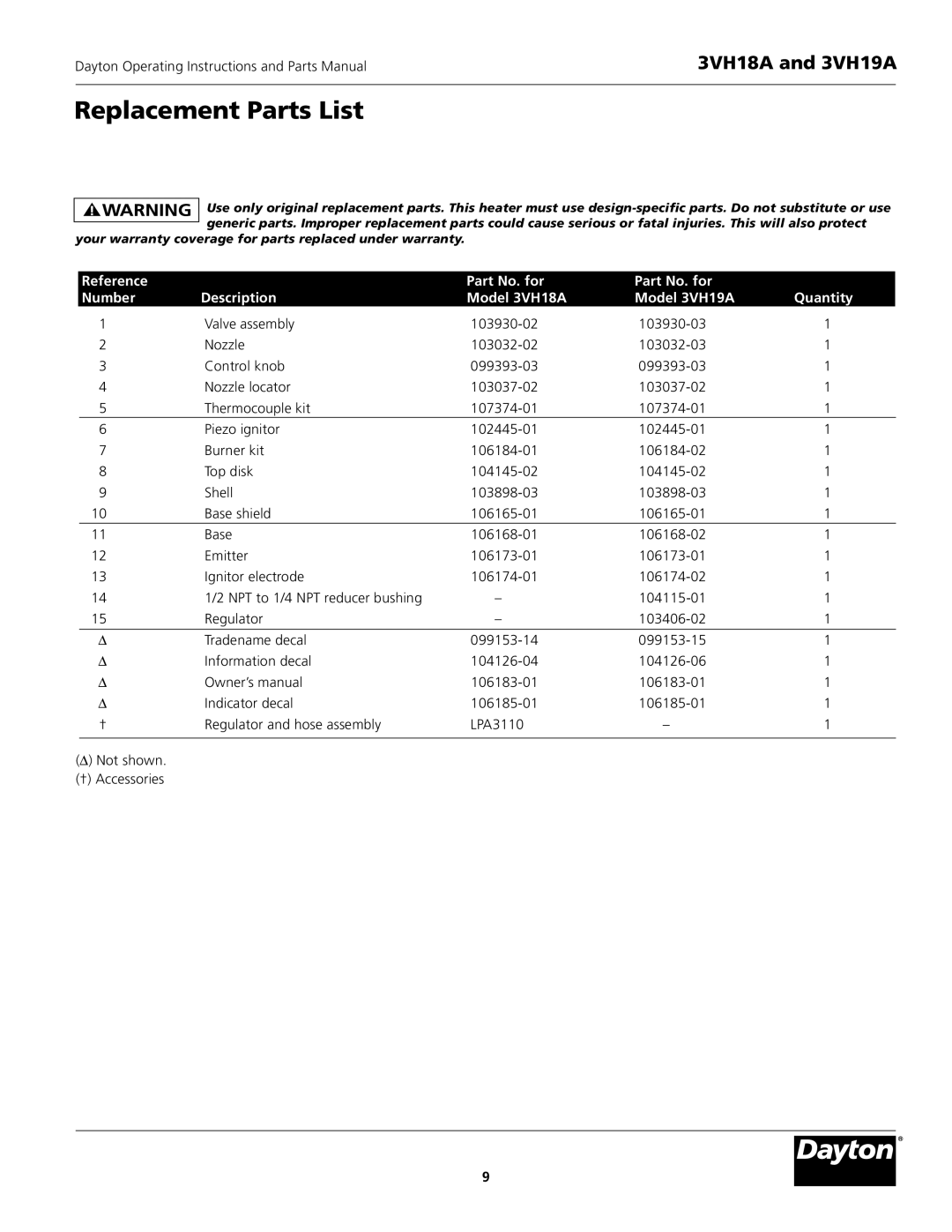3VH19A, 3VH18A specifications
Dayton 3VH18A and 3VH19A are advanced ventilation systems designed to meet the needs of various industrial and commercial applications. Both units are part of a series that prioritizes energy efficiency, reliability, and versatile performance, making them suitable for everything from warehouses to manufacturing facilities.The Dayton 3VH18A is a direct drive fan with a robust motor that operates at a speed of 1,050 RPM, providing an airflow capacity of approximately 1,400 CFM. Its simple yet effective design enables effective air circulation, ensuring that spaces are adequately ventilated. The fan is equipped with a lightweight but durable metal housing, which can withstand the rigors of continuous operation.
In comparison, the Dayton 3VH19A features a slightly higher airflow capacity of 2,300 CFM, making it ideal for larger spaces. This fan also operates at 1,050 RPM, but its larger diameter impeller allows it to push a greater volume of air, enhancing its efficiency. Both models incorporate high-quality ball bearings, promoting longevity and low maintenance needs.
One of the standout technologies of both 3VH18A and 3VH19A is their energy efficiency. The fans are designed to minimize power consumption while maximizing airflow, resulting in lower operational costs for end-users. They also adhere to stringent industry standards for efficiency and safety, making them a reliable choice for various applications.
Another feature is their versatility in installation options. Both units can be mounted on walls or ceilings, allowing for flexible positioning depending on the specific ventilation requirements of a space. Additionally, they are compatible with various control systems, enabling users to integrate them seamlessly into existing HVAC systems for optimized climate control.
In terms of noise levels, both the Dayton 3VH18A and 3VH19A operate quietly, which is essential in environments where noise reduction is a priority, such as schools and healthcare facilities. This focus on low noise output contributes to a more comfortable environment for occupants and workers.
Overall, Dayton 3VH18A and 3VH19A models stand out due to their combination of powerful airflow, energy efficiency, and quiet operation. These features make them valuable assets for enhancing indoor air quality and ensuring comfort in a range of settings. Whether for industrial use or commercial applications, these ventilation systems fulfill the vital role of effective air management, contributing to healthier environments.

